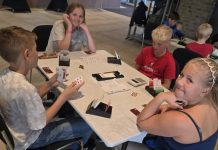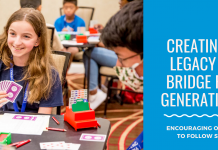Don’t forget to follow us @
Source: Pacific NW Magazine
AIDAN KLEIN STARTED playing bridge early, but casually. “I would go to my grandpa’s house and have ice cream and play bridge,” he says.
But he doesn’t think a bridge-playing grandparent should be a requirement for learning the game — and that’s one reason he founded a bridge club at Mercer Island High School, where he’s now a senior.
He learned competitive bridge from longtime lovers of the game who hope to share their passion with a new generation — and who are succeeding beyond what they imagined.
It began about a decade ago, when a handful of Seattle-area players in bridge’s, um, stereotypical age range launched an all-volunteer effort to teach the game to kids. Yes, bridge: the game involving 13-card hands and strategic bids, usually played with a partner — and often perceived as the stuff of child-free evenings and retirement villages. The volunteers started small and in person, calling themselves Bridge for Youth. Their summer camps (in August this summer) were a hit, and about 50 students came to in-person after-school lessons.
A few things happened in 2020: School went online; students suddenly had more time on their hands; and developers launched Shark Bridge, an online bridge-teaching platform. Bridge for Youth (bridgeinseattle.org/youthbridge, facebook.com/B4Youth) joined forces with a similar Seattle-based group, NextGen Bridge, and tech-savvy volunteers created an all-online curriculum.




























